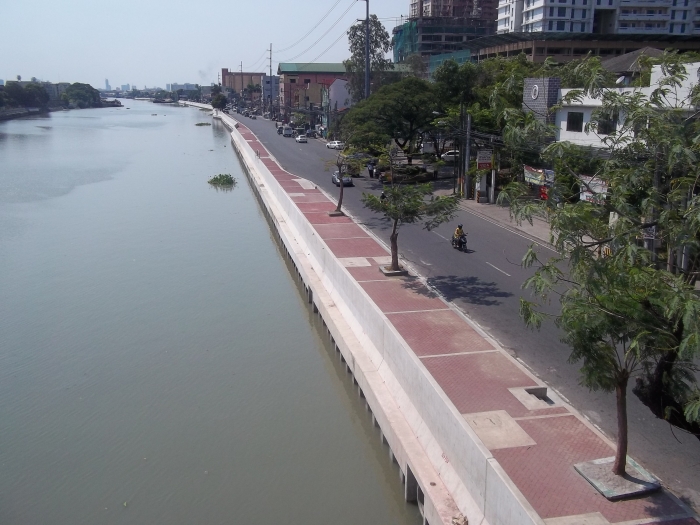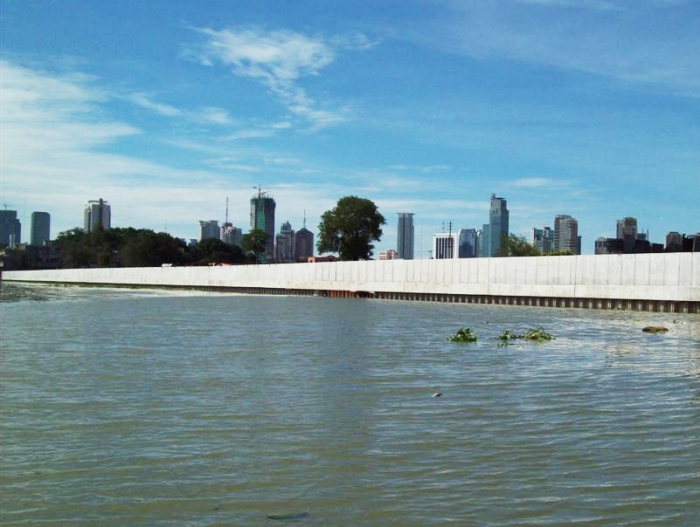- TOYO HISTORY
- LANGUAGE


Toyo Construction Co., Ltd. (President: Kyoji Takezawa) received orders for two projects in the Republic of the Philippines from the Department of Public Works and Highways in that country as part of the Pasig-Marikina River Channel Improvement Project (Phase III). Toyo will carry out improvements in the Pasig River section in a joint project with Shimizu Corp. and in the lower Marikina River as the sole contractor. The two projects were started in June and July 2014, respectively. The total value of the order is approximately ¥12.5 billion (Toyo share: approx. ¥9.3 billion; Pasig River section JV: total approx. ¥6.5 million, Marikina River section: ¥6.0 billion). The order is a continuation from the Pasig-Marikina River Channel Improvement Project (Phase II). Among the loan assistance (yen loans) programs of Japan’s Official Development Assistance (ODA), these projects are being implemented under Special Terms for Economic Partnership (STEP).
Flood damage caused by the Pasig-Marikina River system, which flows through a region where urbanization is particularly advanced, including Metro Manila, has a serious economic and social impact on the region. The aims of these projects are to mitigate the flood damage caused by the rivers while also improving the riverside environment. The projects will make an especially important social contribution, even among infrastructure projects, and are expected to contribute to the stable economic development of the region.
Phase III, which is the object of the order, includes embankment construction and improvement from the Delpan Bridge at the river’s mouth on Manila Bay to the Napindan River flood control gate in the Pasig River section (16.4 km) and dredging, dike construction, and embankment improvement from the Napindan River flood control gate upstream to the lower Mangahan Floodway in the Lower Marikina River section (5.4 km).
The methods adopted in executing this work include Vibratory pile driving with water jetting, which makes it possible to shorten the construction period and minimize vibration and noise during pile driving in medium hard rock ground, as frequently seen in Metro Manila, and hat-shaped sheet piles joined with H-shape steel, which enhance the cross-sectional performance of revetment structures. Japan’s high technical capabilities will also be actively used, for example, by introducing the Premixing solidification treatment method, in which dredged soil with a high water content is improved to a condition that enables reuse by mixing cement with the dredged soil.
Although the Philippines is extremely prone to natural disasters, Toyo Construction has steadily built a record of large-scale river improvement projects in the country since beginning operations there in 1973. These include emergency recovery work in the Agno River region (central Luzon Island), a flood countermeasures project in Ormoc City (Leyte Island), and the Laoag River Basing Flood Control and Sabo Project (northern Luzon), among others.
In the future, Toyo Construction will continue to contribute to the social and economic progress of the Philippines by participating in various projects, beginning with infrastructure improvement projects, and deploying its technologies in that country.
Project Outline

Location of sites
Image after completion
